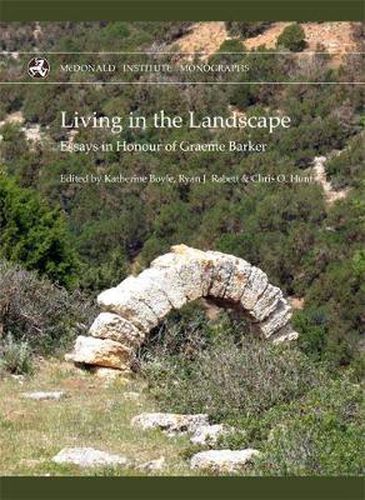Readings Newsletter
Become a Readings Member to make your shopping experience even easier.
Sign in or sign up for free!
You’re not far away from qualifying for FREE standard shipping within Australia
You’ve qualified for FREE standard shipping within Australia
The cart is loading…






This edited volume reflects on the multitude of ways by which humans shape and are shaped by the natural world, and how Archaeology and its cognate disciplines recover this relationship. The structure and content of the book recognize Graeme Barker’s pioneering contribution to the scientific study of human-environment interaction, and form a secondary dialectic between his many colleagues and past students and the academic vista which he has helped define. The volume comprises 22 thematic papers, arranged chronologically, each a presentation of front-line research in their respective fields. They mirror the scope of Barker’s legacy through a focus on transitions in the human-environment relationship, how they are enacted and perceived. The assembled chapters illustrate how climate, demographic, subsistence, social and ecological change have affected cultures from the Palaeolithic to Historical, from North Africa and West-Central Eurasia to Southeast Asia and China. They also chronicle the innovations and renegotiated relations that communities have devised to meet and exploit the many shifting realities involved withLiving in the Landscape.
$9.00 standard shipping within Australia
FREE standard shipping within Australia for orders over $100.00
Express & International shipping calculated at checkout
This edited volume reflects on the multitude of ways by which humans shape and are shaped by the natural world, and how Archaeology and its cognate disciplines recover this relationship. The structure and content of the book recognize Graeme Barker’s pioneering contribution to the scientific study of human-environment interaction, and form a secondary dialectic between his many colleagues and past students and the academic vista which he has helped define. The volume comprises 22 thematic papers, arranged chronologically, each a presentation of front-line research in their respective fields. They mirror the scope of Barker’s legacy through a focus on transitions in the human-environment relationship, how they are enacted and perceived. The assembled chapters illustrate how climate, demographic, subsistence, social and ecological change have affected cultures from the Palaeolithic to Historical, from North Africa and West-Central Eurasia to Southeast Asia and China. They also chronicle the innovations and renegotiated relations that communities have devised to meet and exploit the many shifting realities involved withLiving in the Landscape.